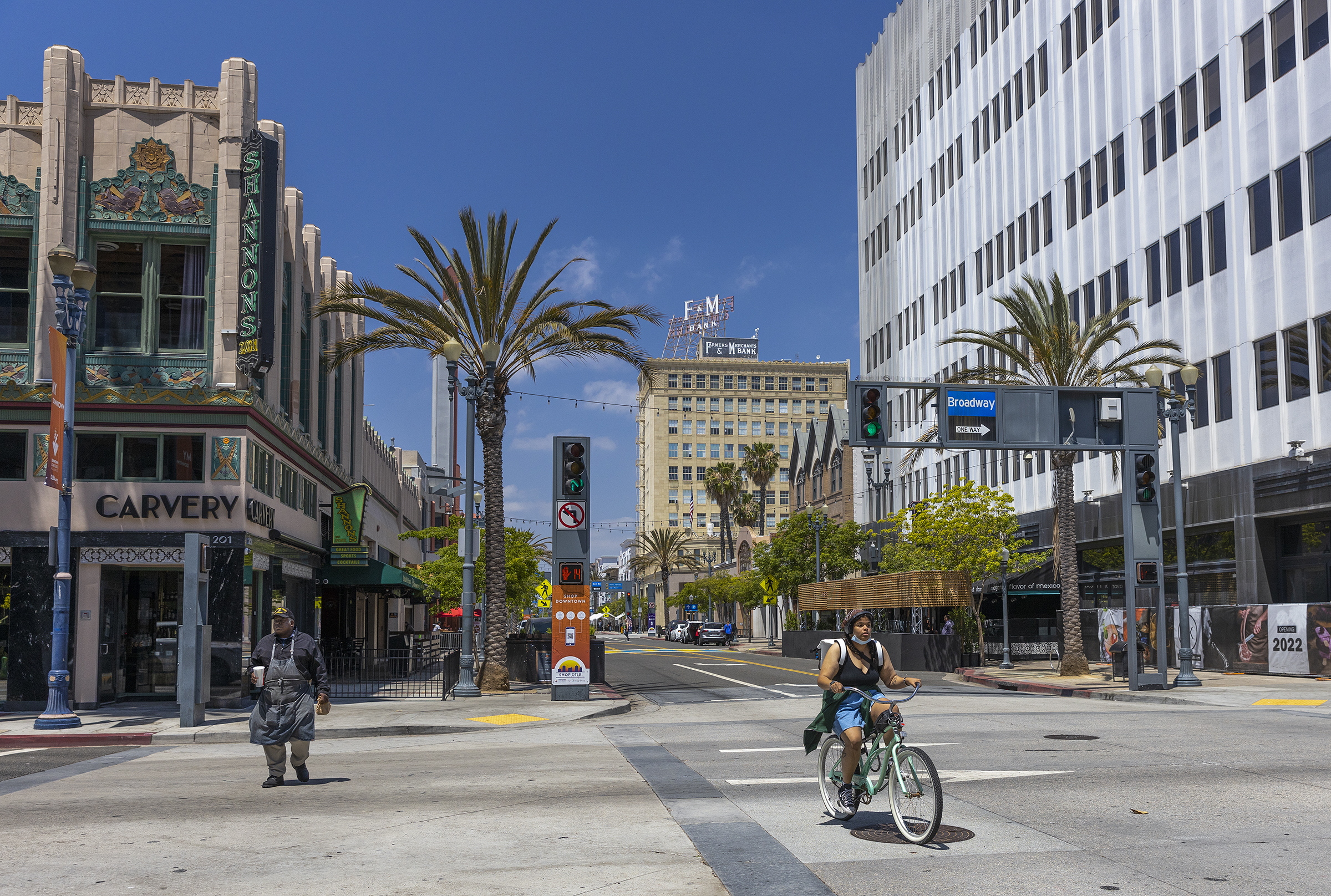The Downtown Long Beach Alliance, the long-time property business improvement district of the area, is up for renewal this year, which would bring with it an expanded boundary and additional fees for property owners, according to city documents.
The PBID has operated in Downtown since 1998 when it was approved for a term of five years. It has subsequently been renewed for two 10-year terms in 2003 and 2012. On Tuesday, the City Council will vote for a third 10-year renewal that includes potentially expanding the district’s boundaries to the north and south.
The northern boundary along Pacific Avenue currently ends at Sixth Street, while the boundary up Pine Avenue continues up to Eighth Street. The new boundary would continue along Pacific Avenue to Eighth Street.
“It’s about continuity of service,” Austin Metoyer, economic development and policy manager for the DLBA, said in a phone interview. “[We] only service our area but there are [other] property owners who have requested those services.”
South of Ocean Boulevard, the current boundary does not encompass any of the waterfront south of Shoreline Drive. The new boundary would expand to include much of the Rainbow Harbor area—stretching from the roundabout near the Aquarium of the Pacific along the waterfront to Shoreline Village, which is not included in the update.
Restaurants along the waterfront, including Hooters, Chili’s, Outback Steakhouse, P.F. Chang’s, Gladstones, Tokyo Wako and Q Smokehouse as well as walking paths along the water, would be included in the DLBA’s service area.
“[Expanding to] the waterfront, it’s still about continuity of service, but it’s more about how [our] ambassadors interact with tourists and visitors,” Metoyer said. “Whether for convention or conference, or just here on vacation, it’s a way to provide hospitality services, engagement, and direct folks to explore more of Downtown.”
The DLBA already has circulated a petition to property owners within its existing boundaries as well as those in the prospective additions. The petition required a majority of property owners—in the case of for-sale residential buildings, each individual owner counts as a property owner.
The organization turned the completed petition into the city last month.


If the council votes in favor of the staff recommendation, all current and prospective DLBA-area property owners would take part in an official ballot vote, which also requires a majority of the assessments to be in favor. The council would then hold a public hearing on July 19 to consider the renewal, hear all protests and tabulate ballots, each of which would be “weighted according to the proportional financial obligation of the affected property,” according to staff.
There are two zones within the district: premium and standard. The premium properties pay a higher rate than those in the standard. Property usage—retail, restaurant, residential, etc.—also plays a role in determining the rate.
The outcome of the vote would be announced before the hearing ends.
If passed, the organization would be approved to operate from Jan. 1, 2023, through Dec. 31, 2032. The DLBA would need to begin the renewal process again in early 2032.
The improvement district’s annual budget is funded through property assessment fees paid by owners. On average, those fees are set to increase 34.5%, according to city documents. The assessments for city-owned properties, for example, is expected to increase almost $180,000 per year to over $785,000 annually, with over $220,000 to be paid by the Pike Outlets property management contractor.
The new additions include 50 parcels of land subject to the assessment.
With the new properties and increased assessment rate, the district’s annual budget will increase from $2.8 million to $3.9 million, according to Metoyer.
Since its last renewal, the DLBA has used its property assessment revenue for a litany of programs, according to city staff. The organization has hosted over 130 events, removed 51,000 stickers and instances of graffiti, updated wayfinding signage, provided regular power washing, created 27 temporary parklets, expanded support for unhoused people and provided over $700,000 in grant funding for small businesses.
The increased budget would pay for additional staffing and services throughout the district, according to a staff report. This would include expanded sidewalk pressure washing, hiring a homeless outreach manager to collaborate with social service agencies, local nonprofits and city departments, increasing pay for workers, and hiring a business navigator to expand support for businesses.
“We started this project back in 2021 … to figure out where programs and services need to be directed for the next five to 10 years,” Metoyer said. “We just want to make sure that [we] align with what we’re hearing from the community.”

